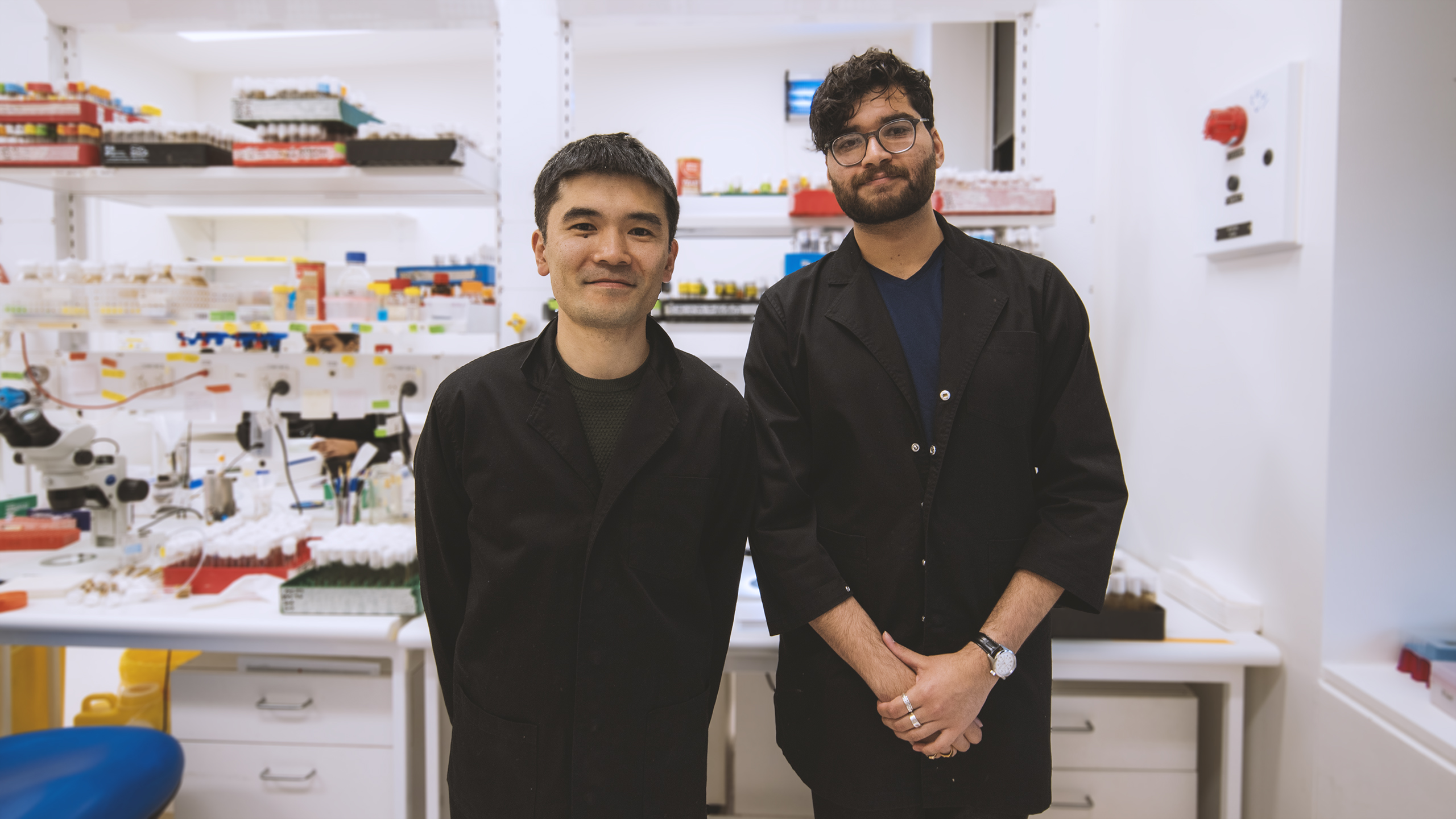New study challenges universal assumption on transposon control mechanisms

Genes in the genome of an organism were long considered stable entities like recipes in a cookbook.
The perception, however, was shattered when geneticist Barbara McClintock discovered in the 1940s that some of such genetic 'recipes' can move around the genome cookbook.
These bizarre 'jumping genes,' now known as transposable elements (TEs), have since been found to exist in nearly all organisms—and in vast amounts. In us humans, for instance, TEs account for at least 45% of the human genome.
"In organisms ranging from yeasts to humans, these jumping genes behave similarly to viruses," says Dr Rippei Hayashi, Group leader of the Transposon Defence and Animal Development Lab at the John Curtin School of Medical Research (JCSMR), "They can hijack the host cells machinery, replicate itself and insert elsewhere."
Given their ability to induce reshuffling of host sequences, cause mutations, and change our genetic makeup, having these jumping genes in our DNA can be risky, and it's crucial for the organism that hosts them to control them tightly.
"Particularly so in the gonad cells where cells critical for offspring are made," explains Dr Hayashi, "Losing control of these jumping genes can lead to sterility and several developmental defects."
Throughout evolution, animals have acquired sophisticated ways to silence the expression of transposon genomes. One of these mechanisms is known as the 'ping-pong cycle', which uses TEs as the source to generate RNA tools to silence TEs.
For a long time, the ping-pong cycle has been thought to be universal among all animals, especially among fruit flies Drosophila, where the mechanism was first discovered.
However, a recent study by Dr Hayashi's lab challenges this assumption: it turns out that not all Drosophila species play ping-pong.
While the well-studied fruit fly Drosophila melanogaster has a functioning ping-pong cycle, Dr Hayashi and PhD student Shashank Chary found that a closely related species, Drosophila eugracilis, which diverged from D. melanogaster only a few million years ago, had completely lost the ping-pong cycle.
More surprisingly, D. eugracilis has adapted to cope with the loss of this vital ping-pong cycle. The RNA tools used by the host to keep transposons in check remained high. Therefore, the loss of the cycle wasn't driven by a loss of need for silencing transposons.
"This raises important evolutionary questions as to how such crucial protective mechanisms can simply be lost, while the rest of its general biology is maintained," says Shashank, "This strange species may be the gateway into discovering a more universal mechanism of how cells recognise foreign particles."
"What drove those rapid changes remains to be described; however, it is tempting to speculate that changes in the TE contents and their expression domain might have contributed as part of an 'arms race' between the host and its genomic parasites," Dr Arie Fridrich from Gregor Mendel Institute of Molecular Plant Biology and Professor Yehu Moran from Alexander Silberman Institute of Life Sciences remark in a commentary article. Dr Fridrich and Professor Moran are not involved in the study.
The findings, now published in PLOS Biology, shed new light on the ongoing battle between transposons and the organisms that host them. Understanding these mechanisms better may have implications for transposon-related diseases and therapies.
"For us, the next step now is to characterise the molecular response pathway to these jumping genes, to identify what might have replaced such a fundamental mechanism," says Dr Hayashi.
